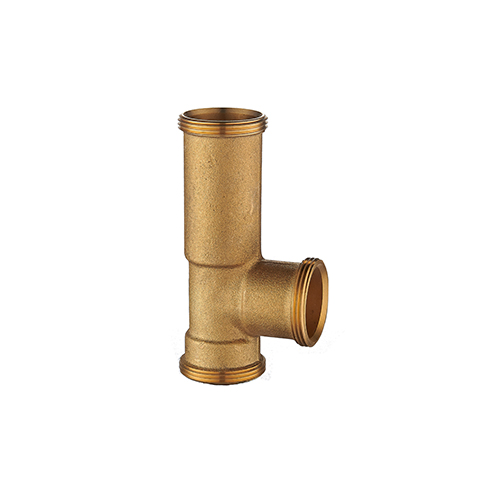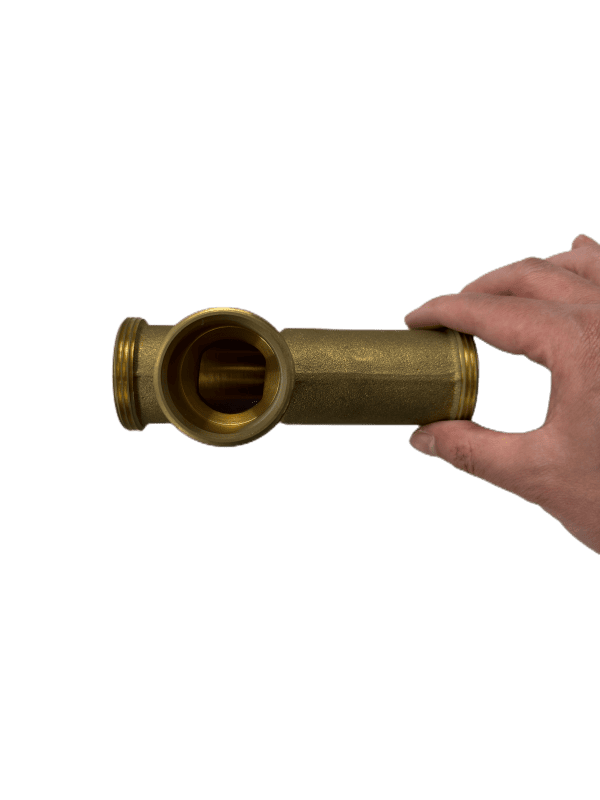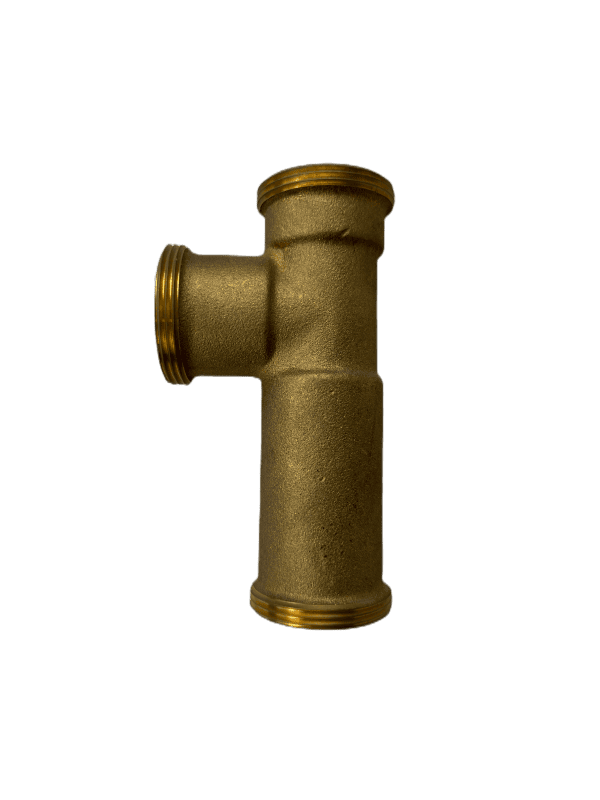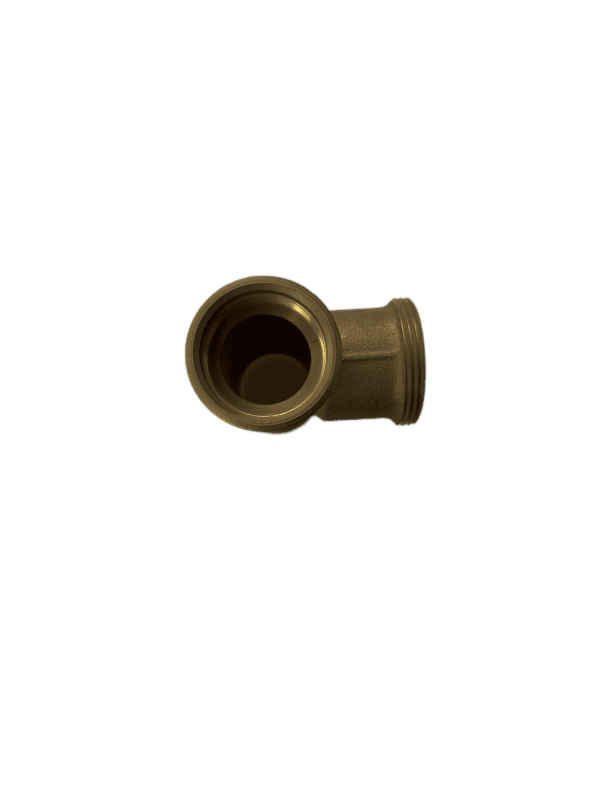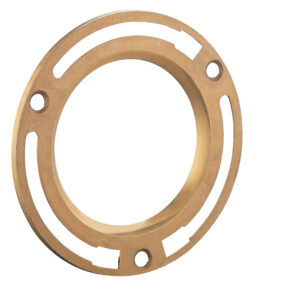Description
1 1/2 inch 3 Way Forged Female Threaded Fitting For Water
JX-0804
- ENHANCED QUALITY BRASS Makes Equal Tee Resistant to Corrosion and Safe for High Temperatures.
- CONVENIENTLY DESIGNED TO CONNECT Pipes or Fittings of Different Diameter, Materials, and End Types. Our Metal Hose Vacuum Gauge Pipe Tee 3-Ways have 1 1/2″ Male x 1 1/2″ Male x 1 1/2″ Male Threads.
- RELIABLE FITTING of the Bushing Reducer is Provided by the Well-Machined Threads and the Relative Softness of the Brass that Enables Tighter Sealing. Easy to Install or Change. It doesn’t Leak!
- UNIVERSAL – our Pipe Tee 3-Ways can be easily used with Water or Oil for Plumbing Applications, Various Measurable Devices, Collectors, Sink mixers Garden Pipe Connections, etc.
- DURABLE –Our Equal Tee doesn’t Deform with Time, unlike Traditional Stainless Steel Thread Bushing or Plastic Pipe Fittings.
A brass 3-way pipe fitting is typically used to connect a bathtub’s drain, supply, and overflow pipes. This blog post will discuss what you need to know about this type of faucet. We’ll also give you an overview of how it works and what types are available so that you can find the right one for your bathroom tub.
When it comes to brass bathtub fittings, the three-way fitting is one of the most common types. It allows you to connect the drain, supply, and overflow pipes in one place. This can make installation much easier since you don’t have to worry about connecting each pipe separately. It also means that if there’s ever a problem with these pipes, you can fix them all at once.
There are two main types of brass bathtub fittings – compression and threaded. Compression fittings use a nut and bolt to tighten around the pipe, while threaded fittings use a screw thread on either side of the connector to hold it in place. Both types have benefits and drawbacks, so it’s important to know what you need before purchasing.
Compression fittings are generally easier and faster to install because they require less time to tighten the screws. They’re also ideal when there isn’t much space between the tub wall and pipe- these can be difficult to thread through with threaded faucets. However, compression brass bathtub fittings aren’t as durable or resistant to corrosion as their counterpart threaded ones, so make sure that your home has a sound ventilation system if you choose this fitting over others.
Threaded connectors tend to be more expensive than other types since they have two separate threads on either side of the connector rather than just around its circumference (like compression). Because of this design difference, threaded fittings are more secure and resistant to leaks. They’re also easier to repair should there be a problem with any pipes since you can tighten them down without taking them apart first.
Brass pipe fittings have been around for hundreds of years, so they’ve stood the test of time as reliable tools homeowners will always need. Whether using compression or threaded connectors, these brass three-way faucets are an excellent choice for quickly getting your home up and running again after problems arise with one or all parts draining water from your bathtub. The next time you experience issues with drain piping, don’t panic! Follow our guide on installing this fitting, and you’ll be back to taking baths in no time.
Shop Brass Bathtub Fittings »
– Compression fittings are easier and faster to install than threaded fittings
– Compression fittings aren’t as durable as threaded fittings
– Threaded connectors are more expensive than compression fittings
– Threaded connectors are more secure and resistant to leaks than compression ones
Brass Bathtub Drains
Brass bathtub drains are becoming increasingly popular in modern bathrooms. Originally used solely for their timeless aesthetic appeal, brass tub drains offer homeowners even more practical benefits. These durable and corrosion-resistant fixtures can last for many years with proper maintenance, making them an ideal choice for bathrooms seeking a classic look that stands the test of time.
The installation process is relatively simple compared to other material options, reducing the time and cost associated with installation. Brass also offers superior thermal conductivity compared to plastic or stainless steel, resulting in faster draining and a reduction in standing water buildup. Additionally, it does not require additional chemicals or components, such as rubber gaskets, for sealing purposes, making it easy to clean and maintain throughout its lifetime.
Benefits of Brass
Brass is one of the most popular materials used in bathroom fixtures and drains. It has many advantages over other materials, and brass bathtub waste drains are no exception. From its decorative look to its durability and longevity, brass offers numerous benefits that make it an ideal choice for any bathroom.
This material is highly resistant to corrosion, making it a great option for areas of the home that experience a great deal of moisture, like bathrooms. It is also incredibly easy to clean and maintain, not requiring any special cleaning products or treatments as other metals may require. Furthermore, brass offers excellent heat retention properties, allowing it to keep water warm for much longer than other materials can manage.
In addition to its practical benefits, brass also adds an elegant touch to any home décor due to its unique visual appeal.
How to Install Brass Drain
Installing a brass bathtub waste drain is a great way to give your bathroom an updated, modern look. With just a few supplies and the right know-how, you can easily replace an old, outdated drain with this stylish choice. To get started, here are the steps you need to take how to install a brass bathtub waste drain.
First, gather all the necessary supplies: a basin wrench or adjustable pliers, a putty knife and plumber’s putty, a new gasket, and a washer kit for your specific drain assembly. Once you have these items on hand and ready to go, start by turning off the water supply so that no water will be present when working with the pipes. Next, remove any existing screw plugs or other fixtures where applicable before loosening any nuts connecting the pipes themselves.
Caring for Brass Drain
Caring for brass bathtub waste drains is essential to keeping them in good condition and preventing them from corroding or rusting. Brass drains are beautiful additions to any bathroom, but they need to be properly maintained and cleaned regularly. A few simple steps can help ensure your brass drain stays in optimal condition for as long as possible.
The first step is to clean the drain regularly with warm soapy water, paying special attention to the area around the stoppers and valves. This helps remove the excess build-up of soap scum, dirt, and other contaminants that could cause damage over time. Rinse the area thoroughly with warm water after washing it down.
Common Issues & Solutions
Brass bathtub waste drains are a popular plumbing item used in many homes. Unfortunately, they are prone to common issues that can be frustrating and difficult to address. In this article, we’ll discuss some of the most common problems people face with brass waste drains and provide solutions for how you can fix them.
The first major issue is clogged drain lines. This is caused by hair, soap scum, toothpaste residue and more that collects in the pipe over time. To address this problem, use a plunger or snake to break up blockages and remove debris from the line. Additionally, adding a mesh strainer to your drain can help reduce large pieces from entering the pipe in the first place.
Alternatives to Brass Drains
Brass bathtub waste drains are one of the most popular and reliable options for bathroom plumbing needs. However, a variety of other materials can be used instead of brass to achieve similar results. This article will explore the different types of alternatives available to homeowners looking for a durable and attractive drain system from copper to stainless steel.
Copper is known for its versatility in plumbing fixtures, and it’s no surprise that many people choose copper over brass when installing a new bathtub waste drain. Copper is also corrosion-resistant and easy to shape and trim, making it an ideal choice for drains in wet environments such as bathrooms or showers. Furthermore, copper has an attractive finish that adds warmth to any space.
Stainless steel is another great option for replacing a brass waste drain in the bathroom.
Conclusion
Our review of the brass bathtub waste drain concludes that it is a great addition to any bathroom. It adds an element of class and luxury to the space while providing superior performance regarding drainage. The solid construction and quality materials make this a reliable product that stands up well over time.
We were impressed with how easy it was to install and its discreet appearance when installed in the tub. We found that the chrome finish provided aesthetic appeal and rust resistance, making it ideal for bathrooms with high humidity. We highly recommend this product to anyone looking for a stylish but functional bathtub waste drain.
